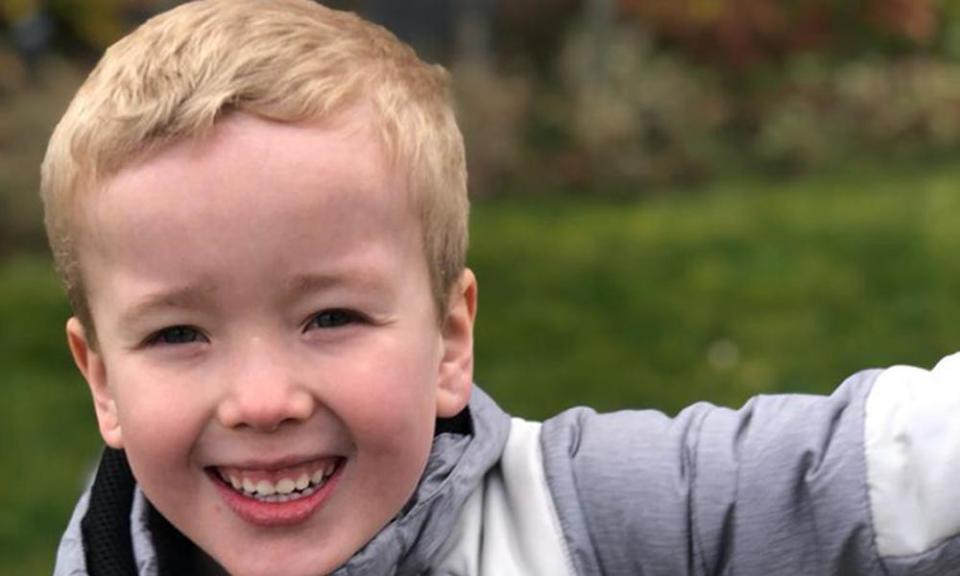How much did lockdown help Arthur Labinjo-Hughes’ killers escape notice?

Analysis: review into murder of Solihull six-year-old will focus on how crimes against him were not picked up sooner
The terrible death of six-year-old Arthur Labinjo-Hughes, murdered by his stepmother Emma Tustin after weeks of abuse and torture, may be an outlier in terms of its sheer brutality but is unlikely to be the only case of its kind to emerge from the lockdown period.
Arthur was killed in June 2020, just weeks after his father, Thomas Hughes, (who was convicted of Arthur’s manslaughter) moved with him into Tustin’s home at the start of lockdown in March 2020. As the pandemic raged, the couple’s staggering cruelty appears to have gone largely unnoticed.
The independent review of Arthur’s case now under way will examine exactly why the authorities in Solihull – social workers, police, schoolteachers – failed to spot the signs of abuse, or intervene, despite warnings from members of his wider family. Any individual errors, and system failures, are likely to be highlighted.
But it may also look at the impact of lockdown on the local safeguarding arrangements. With schools closed, much of normal social life coming to an abrupt halt, and families spending long periods behind closed doors, did the usual early warning system collapse, making it harder for the signs of abuse to be seen?
How far was the effectiveness of the local children’s services department blunted as staff fell ill, were forced to isolate, or unable to carry out the face-to-face family assessments and maintain the relationships that are so crucial to detecting the signs of abuse? Were the police affected by the same pressures?
According to Brid Featherstone, professor of social work at the University of Huddersfield, many social workers worked “heroically” to keep in touch with families despite Covid restrictions. Yet DI Laura Harrison from West Midlands police was clear there had been gaps: “The usual professionals that should have been involved in safeguarding a child weren’t because of the lockdown.”
Referrals to council children’s social care departments in England fell by a fifth in the first few months of the pandemic, according to the Local Government Association, suggesting that the usual levels of vigilance were not maintained. During the same period about 1,600 children were looked after, down a third on previous years.
During this period families came under unprecedented pressure, suffering isolation, financial hardship, and job loss on top of pre-existing stresses. Domestic violence increased under lockdown and rates of mental illness soared – although it is hard to see Arthur’s killers as driven by anything other than callous cruelty.
Official data indicates the first year of the pandemic witnessed a big rise in the numbers of serious incidents involving children in England. Child harm cases reported by local authorities were up by 20%, and child deaths by 19%. There were 536 such notifications in 2020-21, up from 229 the previous year. There was a 20% rise in babies being killed or harmed.
Related: The death of Arthur Labinjo-Hughes raises hard questions – we must address them all | Harry Ferguson
This was not unanticipated. England’s chief inspector of schools, Amanda Spielman, suggested the pandemic had increased the “invisibility of vulnerable children” over a year ago. The then children’s commissioner for England, Anne Longfield, warned just six months into the pandemic that vulnerable children would “slip out of view”.
Arthur’s death may lead to questions about whether enough has been done to ensure those at-risk youngsters remained in sight. This may in turn focus attention on the immense damage caused by huge cuts over the past decade imposed on increasingly fragile children’s departments, and on ways to improve safeguarding and family support services.
It may also trigger a kneejerk media and political reaction, as seen in previous tragedies such as the deaths of Peter Connelly, known as Baby P, and Victoria Climbié. “One of my biggest fears,” says Featherstone, “is that this will become a ‘this must never happen again’ moment and we’ll go back to scapegoating social workers.”

 Yahoo Finance
Yahoo Finance 